City Eyes 50% Tree Canopy Thanks to VPIS’s Neighborhood Tree Program, City Leaders' Dedication

When asked what makes the City of Falls Church such a livable and walkable community, most quickly mention the City’s beautiful tree-lined streets.
But, given all the construction and development in recent years, what’s protecting the City’s overall tree canopy? And, what can you do to help preserve it?
Where the City Stands on Tree Canopy Protections
When U.S. News & World Report ranked the City of Falls Church “America’s Healthiest Community,” last August, the popular magazine with over 40 million readers cited the city’s “education and walkability” as the two leading factors in their 2024 rankings.
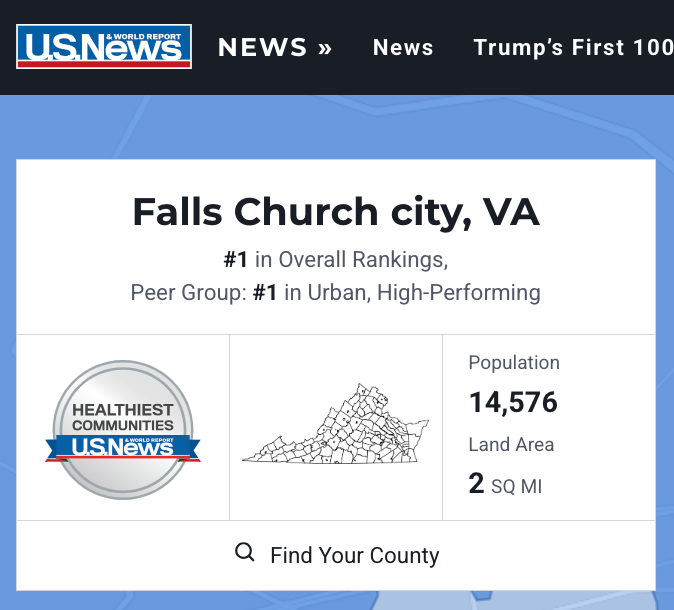
The Little City’s “Natural Environment” also received a 100 percent score in the survey – not for the City’s tree canopy percentage, listed (at a lowball figure of) 32.4 percent – but for the fact that 100 percent of the City’s residents live within .5 miles of a local park, compared with only 31.7 percent of Americans nationwide, and 55.2 percent of Virginians.
Mayor Hardi’s Stance
In her March 21 weekly constituent newsletter, however, City of Falls Church Mayor Letty Hardi, cited the City’s tree canopy as close to 50 percent, but pledged her dedication to continuing to improve that score.
What accounts for the discrepancy? Though it’s not clear, it appears U.S. News & World Report was lowballing the City’s arboreal numbers by lumping its tree canopy statistics with wider areas of the region under fewer arboreal protections.
Nevertheless, in addition to announcing “two sets of walking office hours in April,” (we did say the City's walkable!) and sharing results from a recent “Quality of Life” survey for the City at a whopping 94 percent “Good/Excellent” rating – “up 5 points from 2023” – the mayor also vowed her continued dedication to preserving and expanding the City’s tree canopy in the coming years.
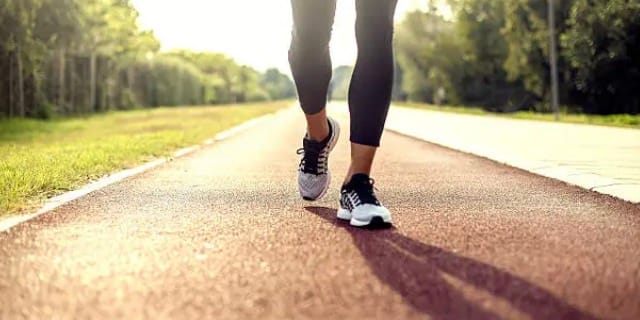
“Our tree canopy is 48%, which has held steady and is quite high for an urbanizing inner ring suburb,” Hardi wrote. “We discussed kicking off work to establish tree canopy standards for certain types of commercial projects. As the first Tree City USA in Virginia, we love our trees and want to keep raising the bar. That said, there are often misconceptions about trees, where they’re cut down, and what we can do about it. Read on!”
The mayor goes on to make clear she’s fighting to raise tree canopy standards as high as lawmakers in Richmond will allow and that the City of Falls Church is working closely with the Metropolitan Washington Council of Governments to boost the City’s tree canopy to an agreed target goal of 50 percent if not beyond. She also seeks to correct many misconceptions about what's been threatening the City's tree canopy in recent years.
The following sub-headline and 5 paragraphs are verbatim from the mayor’s newsletter:
Tree Canopy Discussion
Our tree canopy across the city is about 48% which has held steady and is quite high for an urbanizing, inner ring suburb. For comparison, Arlington is at 35%, Alexandria at 36% and the Fairfax County districts closest to Falls Church are 43%, 45%, and 58%). Our 48% is in line with goals set by the Metropolitan Washington Council of Governments, to reach 50% region-wide, where densely-urbanized counties are encouraged to set goals between 35-45% to achieve these goals.
There was majority support for adopting minimum tree canopy standards for by right commercial projects to be 10%, which is the maximum as allowed by state code.
My thoughts: We all know the benefits of trees and a healthy urban forest – and we can always raise the bar so adopting standards for by right, commercial uses makes sense and is something we should do quickly. I suggested we also come up with standards for open/green space and how much of that should be publicly accessible.
That said, it’s important to put this in context. By right commercial projects represent a very, very small percentage of re-development we see in the city – the best example being the Stratford Motor Lodge conversion to the Stratford Garden Inn now underway. Mixed use projects, which are not by-right and undergo the Special Exception process, are where we can negotiate higher tree canopy %s. You might be surprised to know that our three most recent mixed use projects exceed the 10% tree canopy already: West Falls at 15%, Founders Row 2 at 14%, and the not yet underway Quinn/Homestretch project at 19% and those projects largely replaced asphalt and impervious surfaces with low tree canopy.
Also it’s important to remember that commercial/mixed use projects have touched 38 acres of land in Falls Church over the past 20 years in comparison to residential redevelopment in our neighborhoods which have changed 100 acres. Unfortunately, our residential tree canopy code is already the strictest as allowed by Virginia (20% canopy in 10 years). Likewise, with the often discussed T-zones which is just 3% of the city’s land, we also adopted the maximum tree canopy % as allowed, where there were no canopy requirements before – 10-20% canopy within 20 years depending on the density. This is a repeated focus of our lobbying efforts in Richmond every year to request more authority.
The City’s Take on Trees
On the City’s website, meanwhile, the Little City's “approach to urban forestry” displays a strong commitment to boosting the City’s tree canopy, through a variety of means, including an Urban Forestry Commission, a Neighborhood Tree Program, citizen reporting, tree inventories, tree canopy analysis, and canopy requirements on commercial properties.
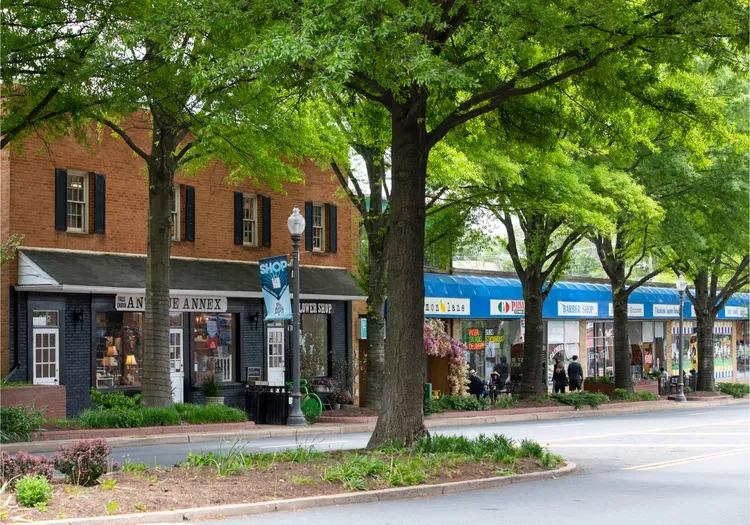
For the City’s “Canopy Analysis,” the City Arborist references a “professional analysis of Greater Fairfax using 2008 and 2011 data" showing "Falls Church City having 46% cover" while "software provided by the US Forest Service allows" the Little City "to analyze the city's forest canopy coverage from readily-available satellite photos; this showed that our 2014 canopy cover city-wide was still 46%.”
These tree canopy figures are, of course, not far off from Mayor Hardi’s current tree canopy finding of 48 percent for the City.
The Village Preservation and Improvement Society (VPIS) and the Neighborhood Tree Program (NTP)
To protect the City’s trees, the City’s Neighborhood Tree Program works in partnership with one of its most historic and highly active civic organizations, the Village Preservation and Improvement Society (VPIS).
“Aside from the Urban Forestry Commission, the Neighborhood Tree Program is our greatest ally, coordinating volunteers to plant street and park trees twice a year,” the City says.
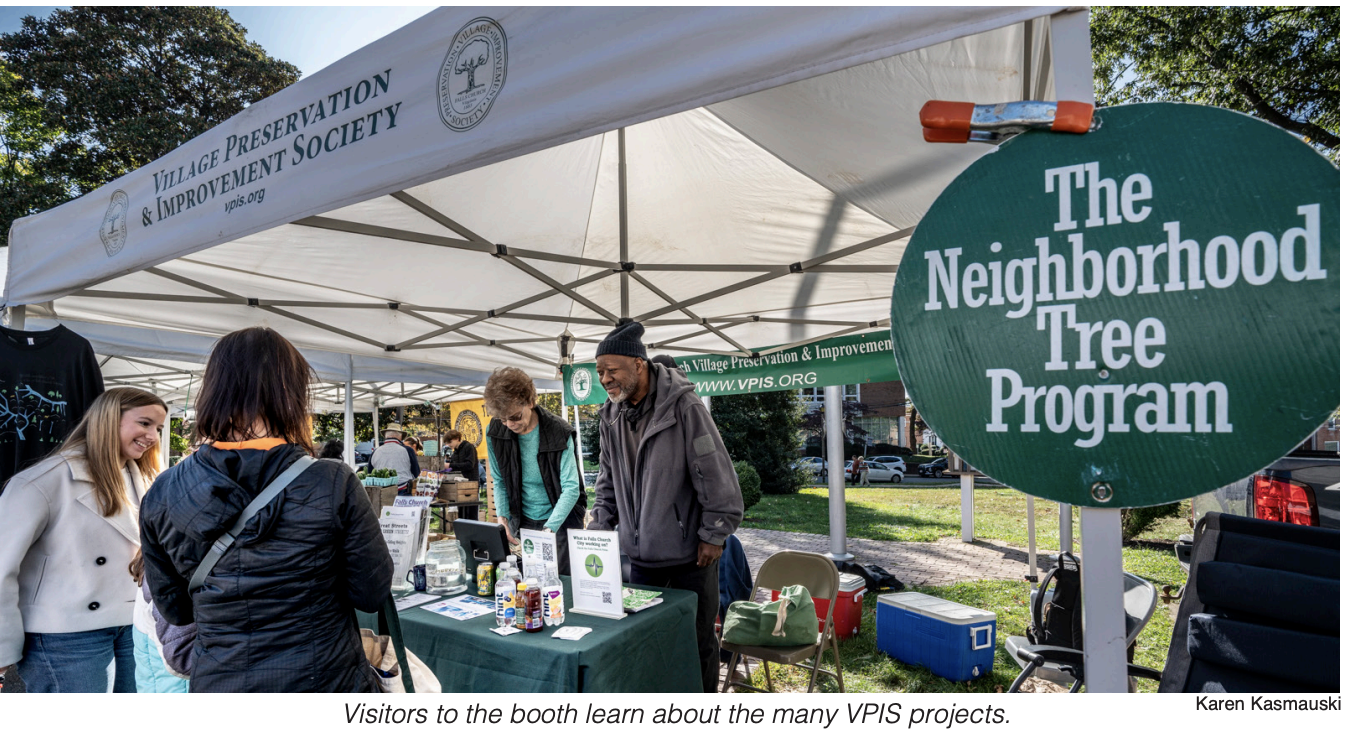
Founded in 1885, VPIS is “an active nonprofit citizen volunteer organization in the City of Falls Church, Virginia," VPIS's website says. "After many years of activism, the Society is still comprised of concerned citizens who address many important issues that face our community. As our Statement of Purpose indicates, the Society works to preserve our natural and built environment, historic structures and landmarks, and promotes cultural activities."
Here’s how VPIS describes their Neighborhood Tree Program (NPT) – and the City's:
VPIS’s Neighborhood Tree Program
The Neighborhood Tree Program is a partnership between the City of Falls Church, the Village Preservation and Improvement Society, and volunteers to help restore and maintain a healthy tree canopy. The program began in 2000.
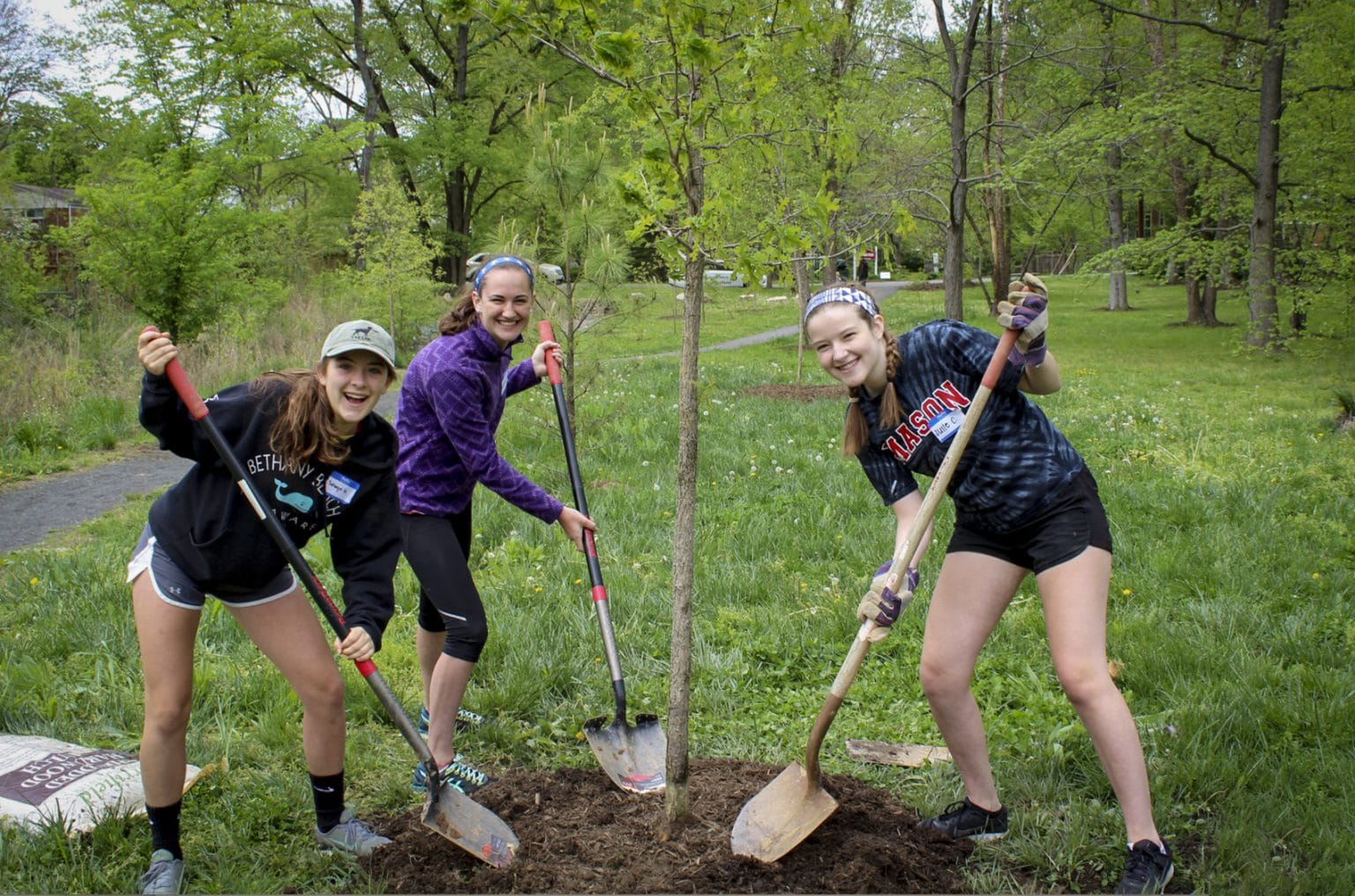
What does the NTP do? First, we strive to educate residents about the benefits of trees and to encourage them to take an active role in planting and caring for trees. Second, we collect donations to purchase and plant native shade trees near streets and sidewalks to cool our community and make it a more inviting place to walk, bike and interact with our neighbors. Shade trees are planted in residential yards within the public right-of-way of the street curb, using volunteer labor coupled with logistical support from the City’s tree professionals at no cost to the landowner. Third, we aim to make native tree saplings available to landowners who do not have sufficient public right-of-way space for a street tree. Landowners volunteer to plant these saplings on other parts of their properties to help regenerate our community’s shared tree canopy.
What can you do to help?

Request a tree! If you have room on your property or in the City right-of-way, request your free street tree using this form: NeighborhoodTreeProgram_TreeForm.
The requested tree must be native and meet the NTP Tree Selection Criteria.
And, the planting site also must meet the following requirements:
- The property is residential and in the City of Falls Church;
- There is space for a shade tree within the City right-of-way (a City staff or volunteer can verify);
- The tree will not interfere with utilities, and;
- The tree cannot be subject to a required landscaping plan.
Volunteer to help plant and care for trees! In late April and early October, the NTP gives away locally-rescued native tree saplings of various species at the VPIS table at the Falls Church Farmer’s Market. From time to time, we organize work parties to plant trees or mulch planted trees. If you would like to volunteer to help with any of these activities or have questions about obtaining a tree for your yard, please email fallschurchtrees@gmail.com.
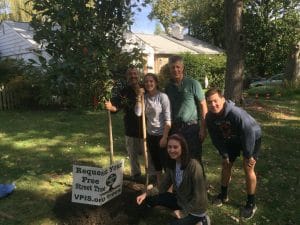
Trees in the City of Falls Church, Virginia Guidebook celebrates trees in our community and has been a collaborative effort involving the Village Preservation and Improvement Society (VPIS), the City Arborist and the Tree Commission. The guide covers the diversity of tree species and the important role trees play in helping make Falls Church such an enjoyable place to live. You can download the guide as a PDF: VPIS Tree Book
More Sober View of Tree Canopy Trends from VPIS’s President
In their Nov. 24, 2024 newsletter, VPIS published “Restoring Our Tree Canopy.” a more sober assessment of trends for the City’s tree canopy, penned by the group’s President, Mark Gross.
“A popular saying of the Village Society is ‘You moved here for a reason.’ For most of you, one of those reasons was the appearance of Falls Church. It was a community of large, mature trees – green, leafy, shady, and beautiful – in fact, an official “Tree City U.S.A,” Gross began.
“That appearance is now diminishing. As large apartment buildings are built, trees that used to be on those lots have disappeared. The location of old George Mason Middle-High School, that was surrounded by many large trees, now has little greenery. In the entire West End, trees are now at a premium.”
“Throughout our commercial areas, shade trees have been lost, or irrevocably damaged and not replaced, especially when new construction extends to the lot line to maximize the size of a building,” Gross continued. “Perhaps most obvious is the loss of trees in our residential communities. As smaller houses are replaced by larger ones, tree canopy has been lost. Developers regularly clear cut lots in order to make building a home easier. Replacing the lost large, mature trees with an eight-foot sapling may restore some of the lost tree canopy, but not for many, many years.”
“It is time for the City to take a hard look at the canopy we have lost, and to take steps to restore it. That will require a review of our zoning and building codes for commercial and residential areas, and changes that will maintain the trees we have and require the planting of new ones."
"The City should take the first step by replacing the many street trees that have been lost over recent years and not replaced. VPIS members need to take an active role in this effort. Tree canopy is a critical element of our efforts to make Falls Church what we want it to be. Otherwise, one of the ‘reasons’ you moved here may never be a 'reason' for future residents.”
What You Can Do This Spring
So, what’s the Neighborhood Tree Program up to in the coming weeks?
From a recent press release, here are events you can look forward to this spring if you’re looking to contribute to protecting the City of Falls Church’s tree canopy, and the health and well-being of the local environment and community.
VPIS Neighborhood Tree Program: Public outreach for Spring 2025
Via, Amy Crumpton, Volunteer Chair of the Neighborhood Tree Program
Adopt a Tree, Celebrate Arbor Day on April 19!
On Saturday, April 19, swing by the VPIS Farmers Market booth to adopt a native tree for your yard and join in the City’s celebration of Arbor Day!
This spring, VPIS will have numerous bare root saplings and a limited selection of potted locally grown rescued trees. Swamp Chestnut Oak saplings, the 2025 Tree of the Year for the City of Falls Church, will be available for adoption. Other species will include Black Cherry, Eastern Redbud, Swamp White Oak, Sweet Bay Magnolia, and White Dogwood. For those of you with small spaces, we will have Black Chokeberry, a native shrub.
To commemorate Arbor Day, VPIS is partnering with City Arborist Charles Prince who will host activities. At 11:00 a.m., he'll raise the City’s 2025 Tree City USA flag in front of City Hall. From 11:30 a.m. to 1:30 p.m., he'll lead volunteers into Cherry Hill Park to plant trees (northwestern corner near Great Falls Street). All ages welcome to volunteer!
When: Saturday, April 19
8:00 a.m. to 1:30 p.m. – Adopt a native tree at the VPIS booth at the Falls Church Farmers Market
11:00 a.m. – View the "Tree City USA" flag-raising at the flagpole across from City Hall
11:30 a.m. to 1:30 p.m. – Volunteer to plant trees in Cherry Hill Park
Good to Know! Conservation Landscaping Talks at Mary Riley Styles Library
April 12: Inviting Nature In: Creating Outdoor Spaces That Support Wildlife

https://www.mrspl.org/event/placeholder-bird-friendly-gardens-23945
11:00 a.m. to 12:00 p.m., Upper Level Conference Room, Mary Riley Styles Library
Join Master Naturalist Amy Bolton to discuss how to incorporate the basic needs for wildlife into your outdoor space. Learn how choosing a few strategic plants can attract a host of birds, butterflies, and mammals. Be surprised at the biodiversity you can support by planting native plants and creating a four-season habitat.
May 3: Controlling Invasive Plants In Your Yard: How to Make Your Efforts Count

https://www.mrspl.org/event/gardening-program-invasive-plant-identification-removal-23942
11:00 a.m. to 12:00 p.m., Upper Level Conference Room, Mary Riley Styles Library
Join VCE Master Gardener Amy Crumpton to discuss how to identify a number of invasive vines and fast spreading invasive perennials and ways to remove them. She will explain how understanding the various growth habits of invasive plants can help you calendarize your removal tasks and lead to better eradication results over time. She will describe tools she finds effective and the resources that have sprung up to support the invasive plant removal movement.
For more info on VPIS go to their website at vpis.org, or contact them via e-mail at: vpisfc@gmail.com, or by regular mail at: Village Preservation and Improvement Society, P.O Box 6824, Falls Church, Va., 22040.
By Christopher Jones






Member discussion